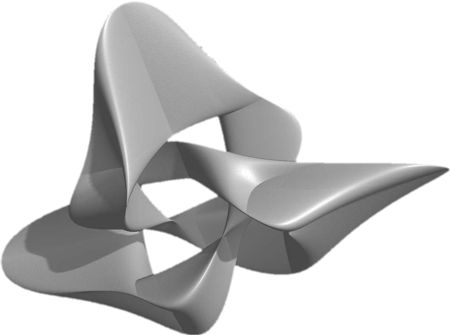Understanding Fractals
A fractal is a shape or pattern that repeats itself at different scales. This means that no matter how closely you zoom in on a fractal, you will continue to see a similar structure. Fractals are often called self-similar because the whole looks like its parts, and the parts reflect the whole.
Fractals are created using a process called iteration. In mathematics, iteration means repeating a formula or process over and over again. Each new result becomes the input for the next step. This repetitive process can create surprisingly complex and beautiful patterns from very simple rules.
Mathematical Examples of Fractals
1. The Mandelbrot Set
The Mandelbrot Set is one of the most famous fractals in mathematics. It is based on a simple equation:
zₙ₊₁ = zₙ² + c,
where z and c are complex numbers (numbers that include both a real part and an imaginary part). Starting with z = 0, the formula is applied again and again (iteration). If the result stays within a certain boundary, the point c belongs to the Mandelbrot Set. When plotted on a graph, this set creates a complex, swirling shape full of repeating patterns.
2. Sierpiński’s Triangle
Sierpiński’s Triangle is a geometric fractal made by starting with a simple triangle. In each iteration, the triangle is divided into four smaller triangles, and the center triangle is removed. This process is repeated for each of the remaining triangles. As the iterations continue, a highly detailed, self-repeating pattern emerges. This fractal shows how repetition in geometry creates complex figures from simple beginnings.
3. The Julia Set
The Julia Set is closely related to the Mandelbrot Set. It also uses the formula zₙ₊₁ = zₙ² + c, but instead of testing many values of c, the Julia Set keeps c constant and tests many starting points for z. Depending on the value of c, the Julia Set can look connected like a web or broken into dust-like pieces. Each Julia Set has its own unique structure, yet they all reflect the same idea: repeating a formula leads to beautiful complexity.
4. The Fatou Set
The Fatou Set is the opposite of the Julia Set in a certain way. While the Julia Set focuses on the boundary between stable and chaotic behavior in iteration, the Fatou Set is made up of points where the iteration behaves predictably or smoothly. In visual terms, the Fatou Set often appears as calmer regions surrounding the more detailed or chaotic edges of a fractal. Together, the Julia and Fatou sets help mathematicians understand the stability and instability in repeated functions.
Why Fractals Matter
Fractals are not just mathematical curiosities—they appear in the natural world as well. The branching of trees, the structure of lungs, coastlines, snowflakes, and even cloud formations can be modeled using fractal geometry. Scientists and engineers use fractals to study patterns in nature, create computer graphics, and model complex systems.
By understanding fractals and how iteration works, students gain insight into how complexity can arise from simplicity—and how the same rules, repeated again and again, can produce the stunning patterns we see in both mathematics and the world around us.
